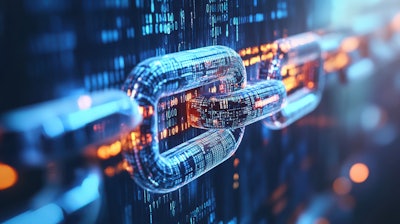
A fascinating contradiction is playing out in distribution centers and manufacturing facilities worldwide. Companies continually invest millions in predictive analytics and digital dashboards; at the same time, teams are still manually entering supplier data from PDFs into 30-year-old systems. The irony is that those ancient systems process orders flawlessly, while modern analytics platforms often fail because they can't handle the handwritten notes and non-standard formats that have been part of business operations for decades.
This scene captures everything wrong with how we approach modernization. We're so eager to embrace the future that we have forgotten what already works.
The uncomfortable truth about legacy systems
What nobody wants to admit is that legacy systems are considered legacy because they are bulletproof. They've survived Y2K, recessions, mergers, and countless "digital transformation initiatives." These tools process millions of transactions without breaking a sweat. The real problem isn't the core systems. It's the edges.
Mainframes handle EDI transactions beautifully, but what happens when a new supplier sends data in a format that didn't exist when Reagan was president? Your ERP calculates inventory perfectly, but can it process the photos of handwritten receiving notes your warehouse team insists on using? Legacy systems show their age not by what they do, but by what they can’t adapt to.
The first-mile problem nobody talks about
The industry obsesses over the "last mile" in logistics, but often overlooks the first mile of data – the messy information trying to enter systems from the outside world – partner spreadsheets with creative formatting, PDF invoices, and quality certificates arriving as smartphone images.
Recent research from IDC found organizations typically receive data in over 80 different formats from external sources, yet most modernization efforts focus solely on internal system upgrades. We’re renovating the kitchen while ignoring that the front door doesn't close properly.
This first mile is where business actually happens. It's where customers send orders, suppliers confirm shipments, and partners share forecasts. Beautiful modern architecture processes poor data really efficiently. It’s garbage in, garbage out, just faster and with better dashboards.
7 paths to modernization
Gartner's research on legacy modernization outlines seven distinct approaches, ranked from the least to most disruptive. What's telling is that the most successful organizations don't jump straight to "rip and replace." They start with encapsulation, wrapping legacy systems with modern APIs or rehosting to better infrastructure. These approaches respect what works while addressing what doesn't.
The best modernization opportunities combine both business and IT drivers. It's not enough that the system is old or expensive to maintain. There must be clear business value in modernization, such as improved agility, a better customer experience, or new capabilities.
Why rip-and-replace usually fails
Too many companies attempt the "big bang" modernization. They hire consultants, buy the latest platforms, and promise revolutionary change. Three years and $50 million later? They're running the old system in parallel because the new one can't handle a critical edge case nobody documented.
The failure pattern is predictable. Week 1: excitement about modern interfaces. Month one: discovery that the new system can't handle a specific date format used by your biggest customer. Month 6: custom code to replicate old functionality. Year 2: running both systems because trust takes time to build.
Meanwhile, the ancient system continues to process orders; ugly, but reliable.
The wrapper revolution
The smart way to modernize is to give legacy systems superpowers rather than retirement notices. Build intelligent layers around what exists; keep the stable core, and modernize the edges. This aligns perfectly with Gartner's encapsulation approach, which leverages existing application features by making them available as services via APIs.
Your mainframe still processes transactions. But now, an intelligent layer sits in front, accepting data in any format. PDFs, emails, and even those creative Excel files where suppliers hide important data in cell comments. This layer translates the chaos of the real world into the structured formats your legacy systems expect.
It's like having a universal translator for business data. Your 30-year-old system doesn't need to understand modern formats. It simply needs to continue doing what it does best: processing clean, structured data according to rules refined over decades.
Respecting institutional knowledge
Legacy systems encode decades of business logic. Every weird exception, every industry quirk, every "we do it this way because…”
A logistics company recently attempted to replace its routing system. The new solution was impressive until it started sending trucks under bridges that couldn't clear. Turns out, the old system had thousands of these little rules, accumulated over the years. "Don't send 53-footers down Maple Street, the turn is too tight." That knowledge wasn't documented. It was in the code.
Smart modernization preserves this intelligence. Whether you're refactoring or rearchitecting, the goal is to maintain this accumulated knowledge while enhancing the system's ability to meet modern requirements.
The human element
Behind every legacy system is someone who knows its quirks. They know that you need to run the inventory update twice on Mondays due to a peculiar bug that has never been fixed. They know which error messages are essential and which to disregard.
These people aren't obstacles to modernization. They're assets. Smart modernization brings them along, values their knowledge, and uses technology to amplify their expertise.
The path forward
The latest enterprise technology reports indicate that 90% of organizations continue to rely on legacy systems for mission-critical operations, yet 87% report these systems hinder their ability to adapt to new business requirements. The answer isn't choosing between stability and innovation. It's achieving both.
Legacy modernization done right is like renovating a historic building. You don't tear it down, but preserve the solid foundation and beautiful craftsmanship while updating the plumbing and adding modern amenities. You respect what previous generations built while adapting it to today's needs.
Legacy systems are the foundation of a business. They've earned their place through decades of reliable service. The goal isn't to replace them but to help them handle a world they weren't designed for, to bridge the gap between what they do well and today’s business demands. From simple encapsulation to complete replacement, the key is choosing the approach that delivers maximum value with minimum disruption. Start with the edges. Fix the first mile. Respect what works. And remember, sometimes the smartest modernization strategy is knowing what not to modernize.

















